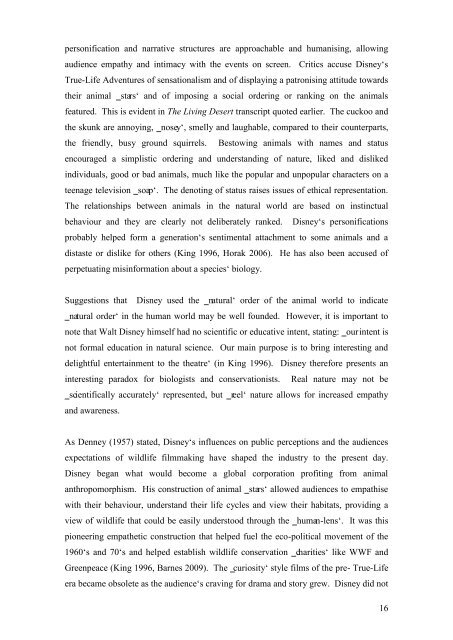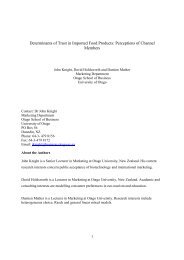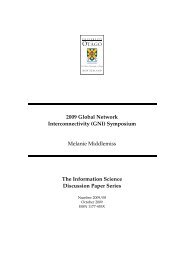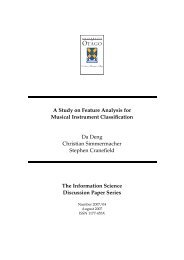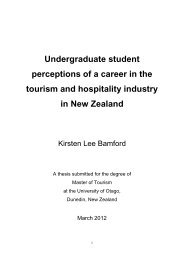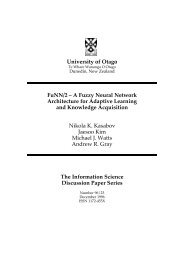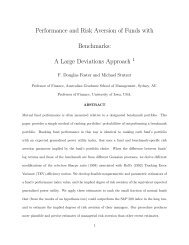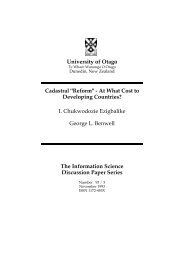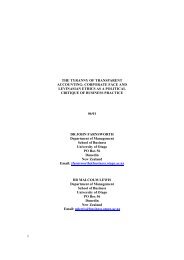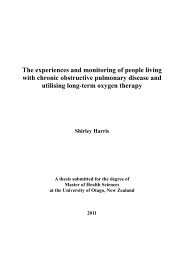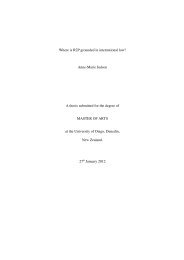Reframing perceptions of anthropomorphism in wildlife film and ...
Reframing perceptions of anthropomorphism in wildlife film and ...
Reframing perceptions of anthropomorphism in wildlife film and ...
You also want an ePaper? Increase the reach of your titles
YUMPU automatically turns print PDFs into web optimized ePapers that Google loves.
personification <strong>and</strong> narrative structures are approachable <strong>and</strong> humanis<strong>in</strong>g, allow<strong>in</strong>g<br />
audience empathy <strong>and</strong> <strong>in</strong>timacy with the events on screen. Critics accuse Disney‘s<br />
True-Life Adventures <strong>of</strong> sensationalism <strong>and</strong> <strong>of</strong> display<strong>in</strong>g a patronis<strong>in</strong>g attitude towards<br />
their animal ‗stars‘ <strong>and</strong> <strong>of</strong> impos<strong>in</strong>g a social order<strong>in</strong>g or rank<strong>in</strong>g on the animals<br />
featured. This is evident <strong>in</strong> The Liv<strong>in</strong>g Desert transcript quoted earlier. The cuckoo <strong>and</strong><br />
the skunk are annoy<strong>in</strong>g, ‗nosey‘, smelly <strong>and</strong> laughable, compared to their counterparts,<br />
the friendly, busy ground squirrels. Bestow<strong>in</strong>g animals with names <strong>and</strong> status<br />
encouraged a simplistic order<strong>in</strong>g <strong>and</strong> underst<strong>and</strong><strong>in</strong>g <strong>of</strong> nature, liked <strong>and</strong> disliked<br />
<strong>in</strong>dividuals, good or bad animals, much like the popular <strong>and</strong> unpopular characters on a<br />
teenage television ‗soap‘. The denot<strong>in</strong>g <strong>of</strong> status raises issues <strong>of</strong> ethical representation.<br />
The relationships between animals <strong>in</strong> the natural world are based on <strong>in</strong>st<strong>in</strong>ctual<br />
behaviour <strong>and</strong> they are clearly not deliberately ranked. Disney‘s personifications<br />
probably helped form a generation‘s sentimental attachment to some animals <strong>and</strong> a<br />
distaste or dislike for others (K<strong>in</strong>g 1996, Horak 2006). He has also been accused <strong>of</strong><br />
perpetuat<strong>in</strong>g mis<strong>in</strong>formation about a species‘ biology.<br />
Suggestions that Disney used the ‗natural‘ order <strong>of</strong> the animal world to <strong>in</strong>dicate<br />
‗natural order‘ <strong>in</strong> the human world may be well founded. However, it is important to<br />
note that Walt Disney himself had no scientific or educative <strong>in</strong>tent, stat<strong>in</strong>g: ‗our <strong>in</strong>tent is<br />
not formal education <strong>in</strong> natural science. Our ma<strong>in</strong> purpose is to br<strong>in</strong>g <strong>in</strong>terest<strong>in</strong>g <strong>and</strong><br />
delightful enterta<strong>in</strong>ment to the theatre‘ (<strong>in</strong> K<strong>in</strong>g 1996). Disney therefore presents an<br />
<strong>in</strong>terest<strong>in</strong>g paradox for biologists <strong>and</strong> conservationists. Real nature may not be<br />
‗scientifically accurately‘ represented, but ‗reel‘ nature allows for <strong>in</strong>creased empathy<br />
<strong>and</strong> awareness.<br />
As Denney (1957) stated, Disney‘s <strong>in</strong>fluences on public <strong>perceptions</strong> <strong>and</strong> the audiences<br />
expectations <strong>of</strong> <strong>wildlife</strong> <strong>film</strong>mak<strong>in</strong>g have shaped the <strong>in</strong>dustry to the present day.<br />
Disney began what would become a global corporation pr<strong>of</strong>it<strong>in</strong>g from animal<br />
<strong>anthropomorphism</strong>. His construction <strong>of</strong> animal ‗stars‘ allowed audiences to empathise<br />
with their behaviour, underst<strong>and</strong> their life cycles <strong>and</strong> view their habitats, provid<strong>in</strong>g a<br />
view <strong>of</strong> <strong>wildlife</strong> that could be easily understood through the ‗human-lens‘. It was this<br />
pioneer<strong>in</strong>g empathetic construction that helped fuel the eco-political movement <strong>of</strong> the<br />
1960‘s <strong>and</strong> 70‘s <strong>and</strong> helped establish <strong>wildlife</strong> conservation ‗charities‘ like WWF <strong>and</strong><br />
Greenpeace (K<strong>in</strong>g 1996, Barnes 2009). The ‗curiosity‘ style <strong>film</strong>s <strong>of</strong> the pre- True-Life<br />
era became obsolete as the audience‘s crav<strong>in</strong>g for drama <strong>and</strong> story grew. Disney did not<br />
16


